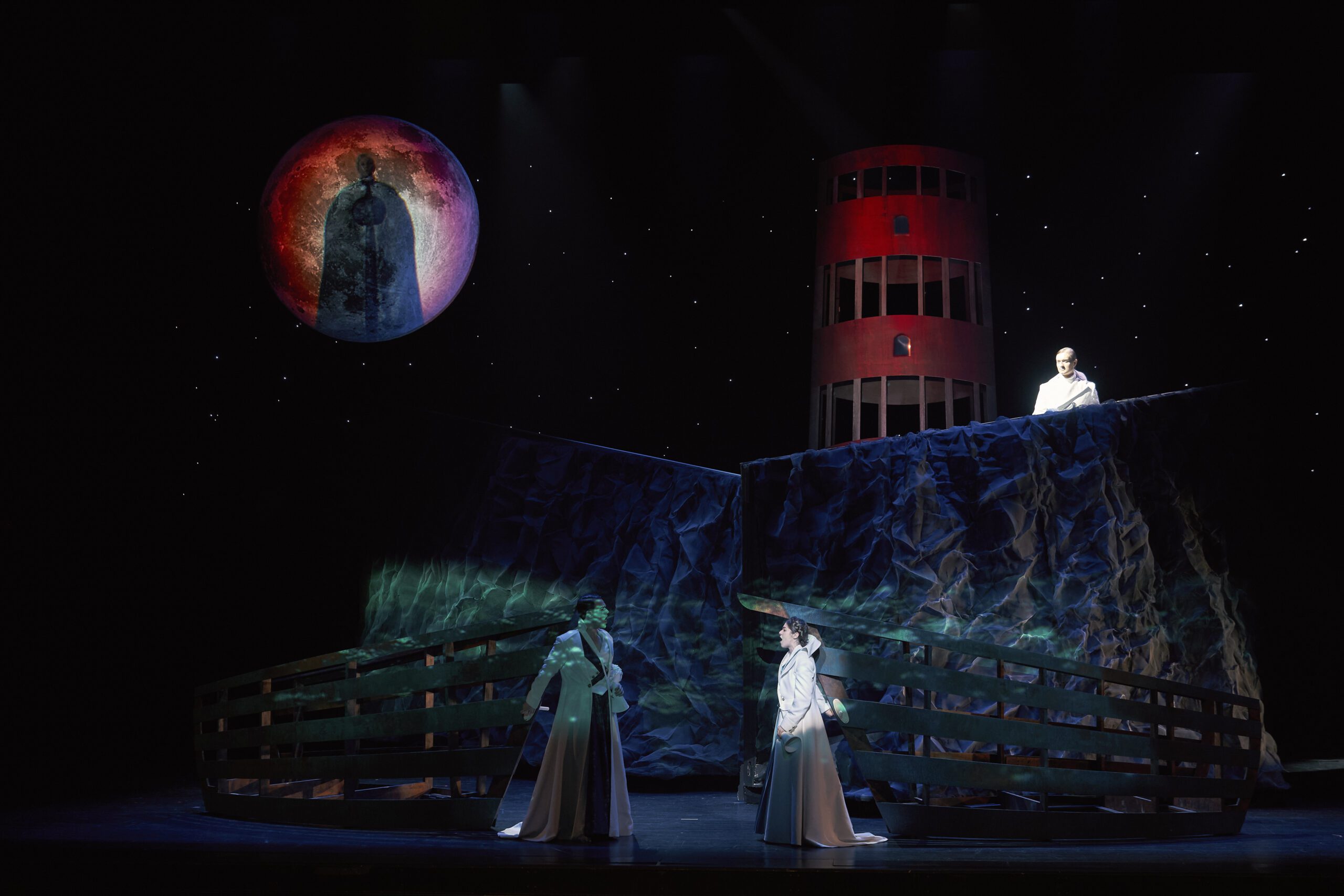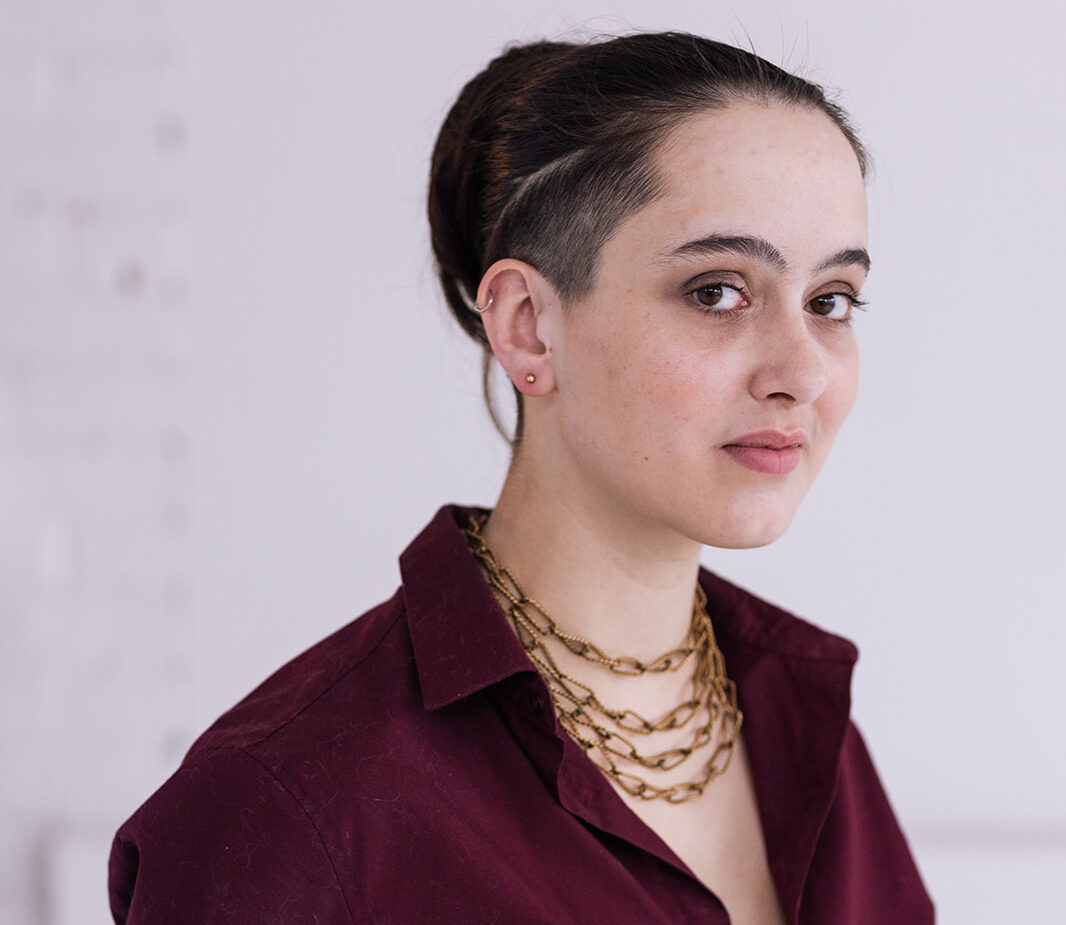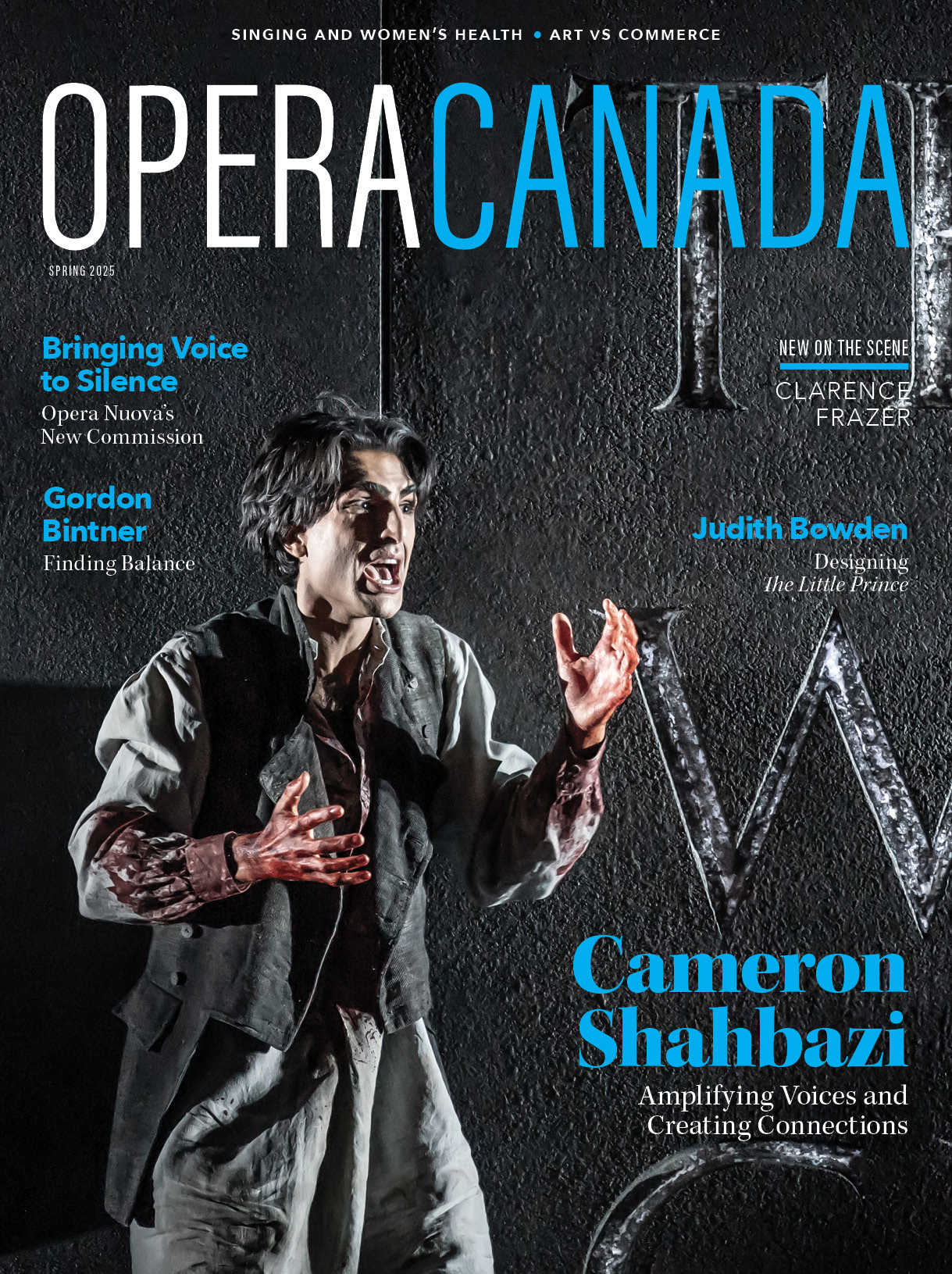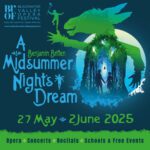Opéra de Montréal’s latest show combined Laurence Jobidon’s Le Phare with Ravel’s L’enfant et les sortilèges. This 75-minute double bill was advertised both as a family affair and as a showcase for the young artists of the Atelier Lyrique. In my view, it succeeded on both counts – and many more.
With music by Quebec composer Laurence Jobidon and libretto by Maria Reva, Le Phare (The Lighthouse) takes place around a small rocky island in the dead of night. It has only four characters: two boats (countertenor Ian Sabourin and soprano Sophie Naubert) and two maritime light sources – the moon (soprano Chelsea Kolić) and the titular lighthouse (baritone Jamal Al Titi).
The boats are close companions who playfully sound their foghorns; the lighthouse and the moon, meanwhile, feel isolated and friendless. The lighthouse hopes to gain some company by extinguishing his light, but this causes one of the boats to crash against the rocks. A dreamlike plot unfolds: the moon descends, the second boat searches for her companion, and eventually, the lighthouse eases his loneliness among new friends.
As soon as the curtain rose, a beacon atop the lighthouse began to make full turns, sweeping dramatically over the audience. Lighting by Alexandre Pilon Guay, seamless video effects by Gaspard Philippe, costumes by Marc Sénécal, sets (and staging) by Sylvain Scott – all were part of what made this production so visually captivating.
Jobidon’s expressive, evocative music foregrounded Reva’s libretto while drawing on a wide palette of orchestral and vocal effects. Her score was executed with precision and grace; I was particularly taken with the soprano-countertenor duets for the two boats and the low rhythmic groove mimicking the sound of crashing waves.
Next up: Ravel’s L’enfant et les sortilèges, in an “enriched” reprise of a production from two years ago. According to general director Patrick Corrigan in the program, that 2023 performance was Opéra de Montréal’s first foray into “family opera,” and its success led to the development of this double bill for all ages.
Atelier Lyrique alumna Lucie St-Martin reprised her 2023 role as L’enfant, the opera’s young boy protagonist. With her sincere stage presence, strong soprano, and boyish body language, she successfully anchored the whole colourful, cockamamie opera.
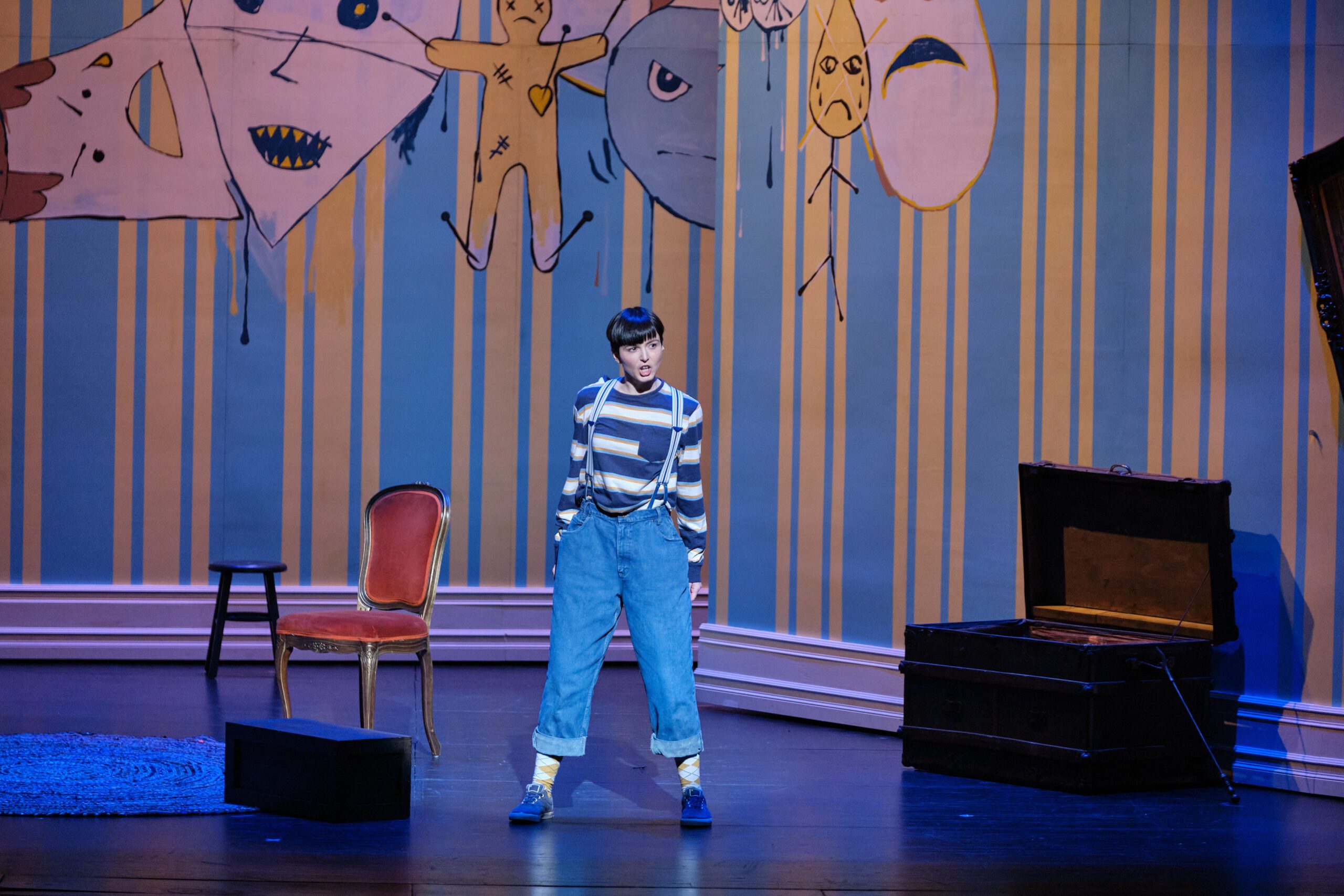
Photo Credit: Vivien Gaumand
Lucie St-Martin in the title role of L’enfant et les sortiléges
Marc Sénécal’s costumes stood out as simple but fanciful and charming and helped the singers’ physical comedy get some intergenerational laughs. Meanwhile, the Orchestre de l’Agora played beautifully under Nicolas Ellis, who maintained exemplary balance and ensemble even in the opera’s most off-the-wall moments.
The singing was excellent across the board. Sophie Naubert’s coloratura as Fire and tenor Angelo Moretti’s rapid-fire diction as Arithmetic were particularly memorable. (Moretti also did some impressive hopping as the Frog.) Like Le Phare, though, L’enfant benefited most of all from its tight-knit ensemble cast, expertly staged by Sylvain Scott.
Indeed, the entire evening’s success hinged on an alchemical reaction between score, libretto, orchestra, singing, acting, staging, lighting, costumes, makeup… The result was greater than the sum of its parts. Call it synergy, call it Gesamtkunstwerk – either way, it’s why I go to the opera.
In closing, I’d like to tip my hat to some good decisions made by the Opéra de Montréal team.
First, they chose a smaller venue. The Théâtre Maisonneuve seats 1,500, half as many as the Opéra de Montréal’s nearby mainstage. The hall usually hosts dance, theatre, or comedy. Doing opera there required reduced orchestral forces and some light amplification, but I think it was worth it. The performance felt more intimate than usual, and the French text came through loud and clear – clearly enough to connect directly with Francophone audiences.
Second, they changed the libretto of L’enfant during the “Chinese teacup” scene. The modified version was seamless and light-hearted, with some actual Mandarin in the supertitles. Good riddance to the old “Keng-ça-fou, Mah-jong” lyrics. No child – no person – should leave the opera thinking that jokes at the expense of Asians are high culture.
Third, they hired a movement coach, Jamie Wright. Someone like Wright, with a dance and theatre background, seems like an especially valuable resource for young artists doing these particular shows. Wright helped Atelier Lyrique members become boats, cups, chairs and animals, and the singers rose to the occasion, capturing the imaginations of both children and adults.
“Family opera” deserves this kind of room to grow and flourish. There is no need for children’s programming to be an afterthought to the main season – done right, it can develop new talents, draw in new audiences, and remind regular operagoers what they love about the art form.
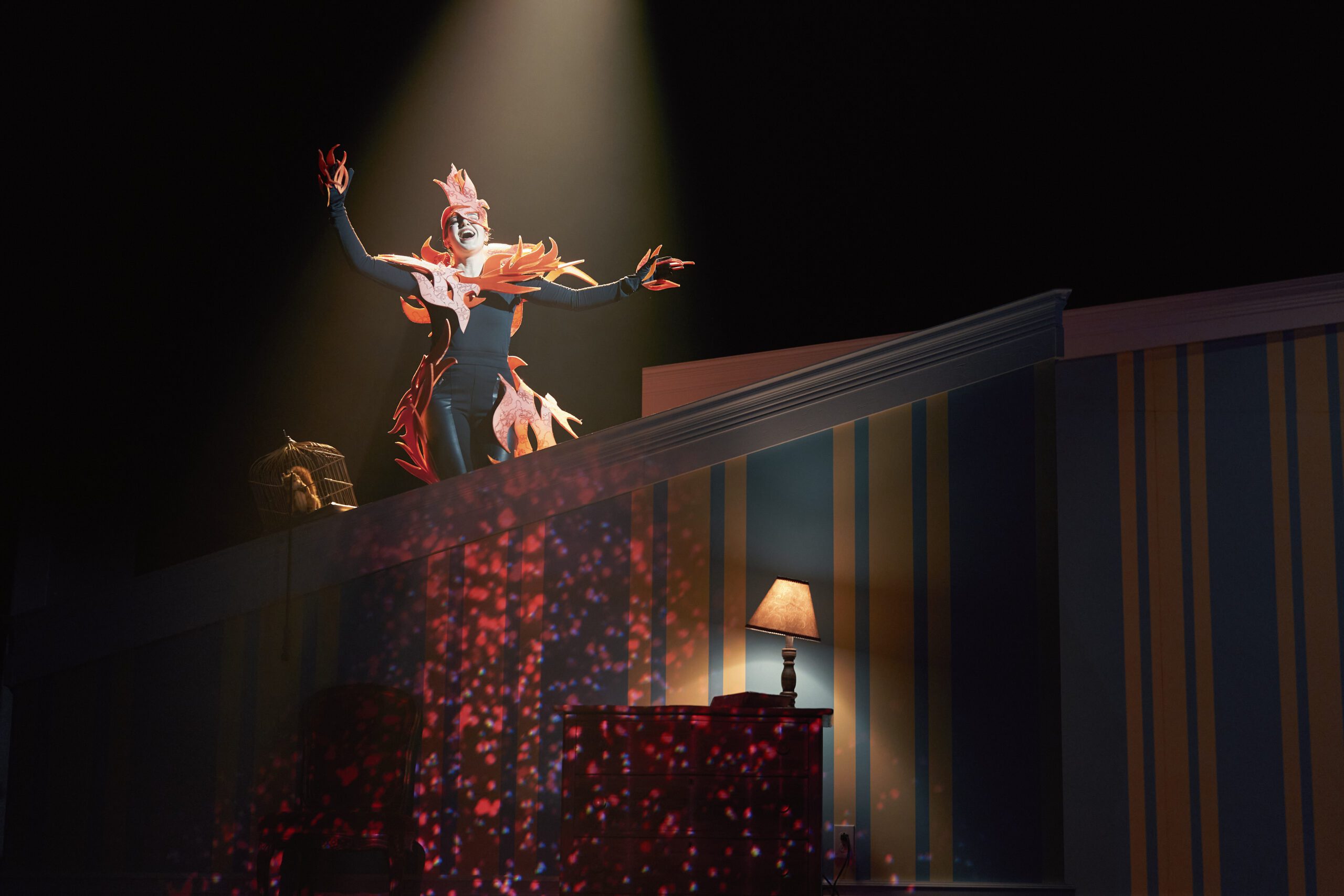
Photo Credit: Vivien Gaumand
Sophie Naubert as Fire in L’enfant et les sortilèges
Opera Canada depends on the generous contributions of its supporters to bring readers outstanding, in-depth coverage of opera in Canada and beyond. Please consider subscribing or donating today.

